History of Cargo Containers
The invention of shipping containers by Malcom McLean in 1956 brought about a significant transformation in the global shipping industry. The standardization of container sizes by the International Standards Organization (ISO) in 1968 further enhanced their importance as the primary method of transporting dry goods by allowing ships, chassis, and handling equipment to be designed to accommodate all containers. This standardization greatly reduced shipping costs and time. In fact, the Economist magazine has stated that “the shipping container has had a greater impact on globalization than all trade agreements combined over the past 50 years.”
Today, there are various types of standard shipping containers available, but the original 20′ and 40′ containers continue to be the most commonly used. Sea transportation accounts for over 80% of all traded goods globally, and a significant portion of this volume is transported in shipping containers. It is essential to understand the different types of containers available to choose the most suitable one for your specific needs.
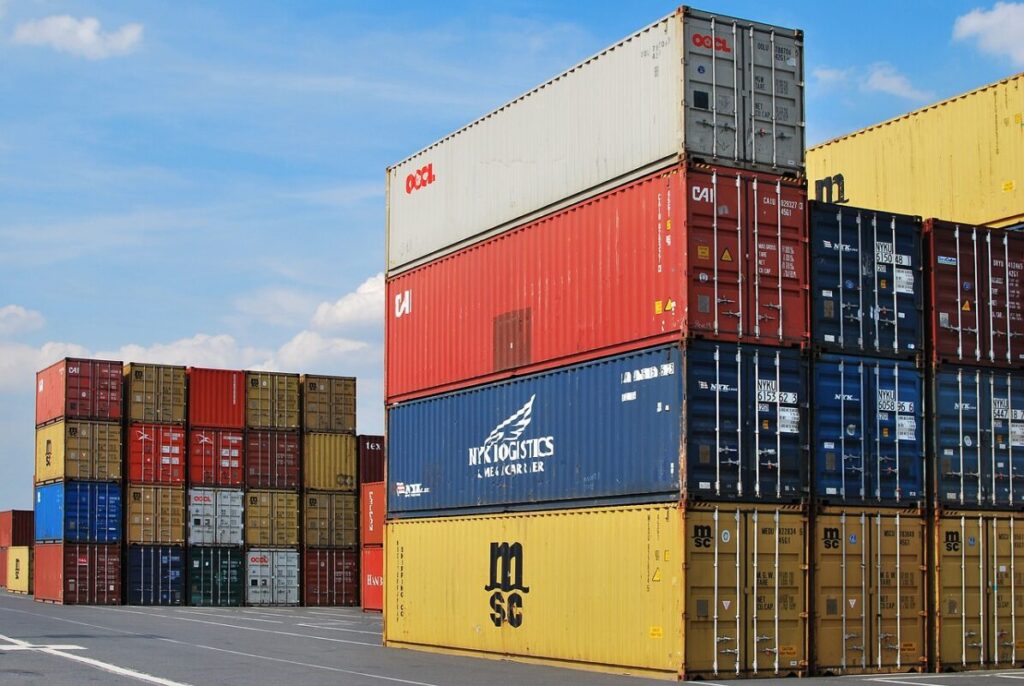
Refrigerated Container
Insulated shipping containers that are ideal for transporting perishable goods are refrigerated ISO containers, sometimes referred to as Reefers. You may adjust the inside temperature with the controls that come with the refrigeration equipment that is part of the bulkhead wall.

The refrigerated shipping container is insulated and does not work.
When the refrigeration unit in a refrigerated shipping container stops operating, it is considered an insulated non-functional container. On the end, you’ll typically see one set of double doors. Insulated containers and non-operating reefer containers are other names for non-working refrigerated shipping containers (NOR).
COOL SHIPPER CONTAINER THAT WORKS
Products that require a constant temperature between -15°F and 60°F during transportation can be safely transported in insulated refrigerated shipping containers. You may put them on a chassis and move them around, or you can install them on-premise to provide additional cold storage.
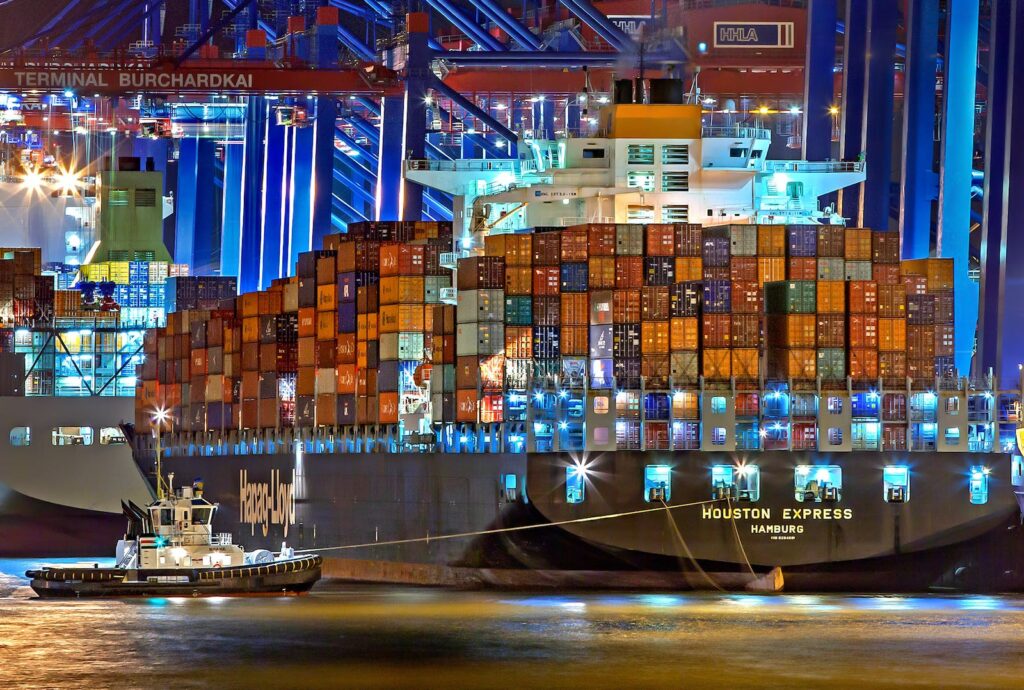
Transport container for dry vans with doors on each end and a tunnel design
A dry van shipping container with end-to-end doors is similar to a regular shipping container, with the exception that it has two doors instead of one. Because it is possible to enter from one side and depart from the other, it is very convenient for loading and unloading things quickly. A tunnel container is another name for it.
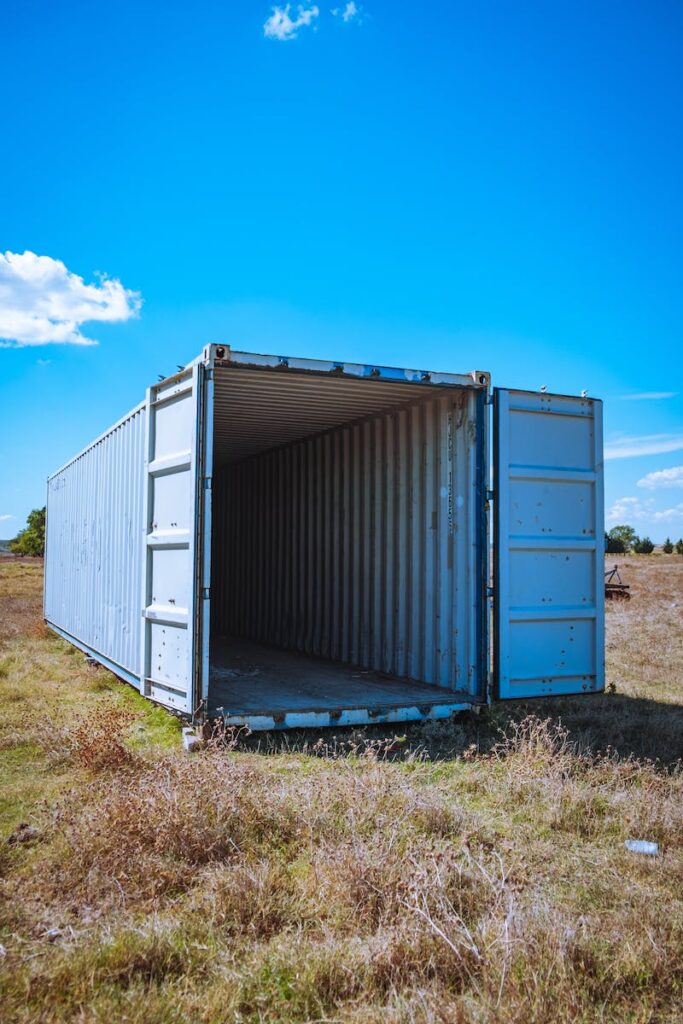
Open-Sided Shipping Box
Similar to the fully-enclosed conventional metal shipping containers, but having bi-fold doors on one side instead of a wall, is an open side shipping container with double doors on one end. You may open the extra bi-fold doors on one side or open them fully and remove them. This type of storage container goes by a few different names: side access, full-side access, and side-opening storage container.
Dry Van Containers
Dry van shipping containers are the most typical ones you might find in ports, on ships, or in trucks. You can get them in a variety of heights and lengths, and you can even have them with a variety of door options, such open side containers with doors on the side, double doors on one end, or both ends
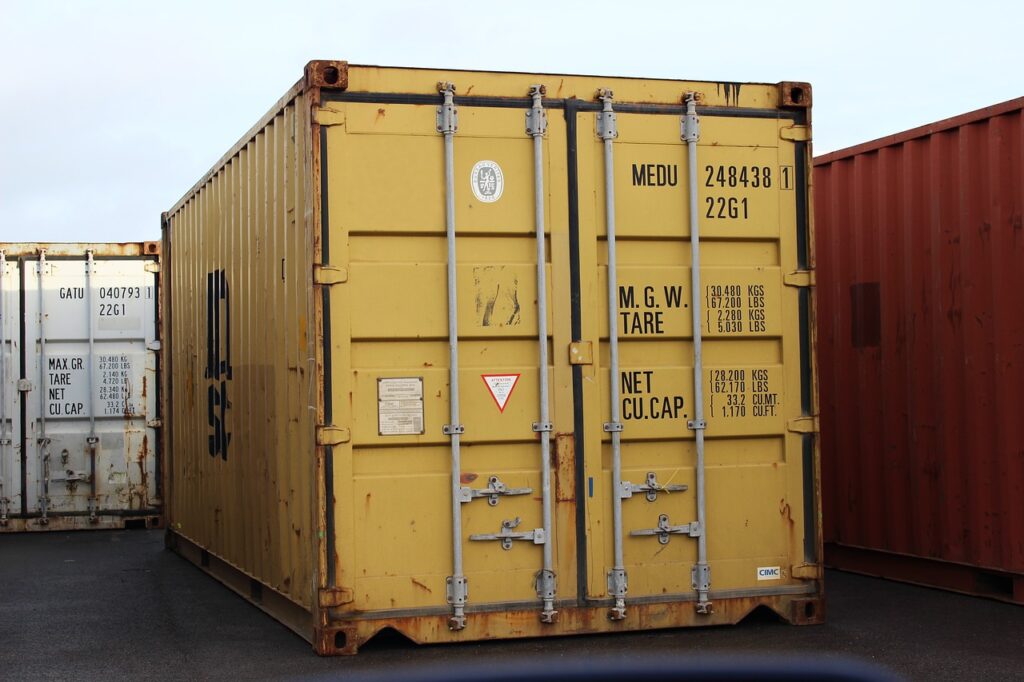
TRANSPORT VAN WITH A SINGLE SET OF DOUBLE DOORS AT ONE END
One pair of twin doors that seal shut characterizes the conventional shipping container. Shipping products by water, road, or train most often makes use of these containers. Additionally, they are ideal for storing items.
Shipped in a dry van with high cubes
High cubes are an option for the majority of conventional dry van shipping containers. The conventional dry van is 8 feet 6 inches tall, but a high cube cargo container is 9 feet 6 inches tall. With an additional foot of height, the container is both more spacious vertically and less “boxy.” Because of this, it is perfect for alterations and constructions.
Items stored on flat racks
Shipping containers with flat racks, whether collapsible or not, are ideal for moving large or heavy items. Although they are commonly sold with two walls, you may also have them without walls at all.
Top shipping container opened
A typical shipping container has a metal roof, while an open-top container does not. A tarpaulin roof and detachable roof bows are its alternative. Shipping containers like this make it much easier to load and unload tall or heavy cargo, which would otherwise require a crane. They can hold more than regular dry vans due to the detachable roof.
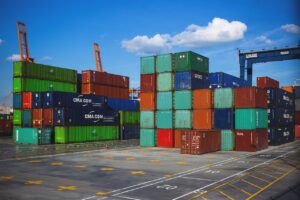
Types of shipping containers
1. Introduction to Shipping Containers Shipping containers are an essential component of global trade, enabling the efficient and secure transportation of goods across vast distances.

Understanding Container Tracking Systems: Technologies and Advancements
1. Introduction to Container Tracking Systems Container tracking systems play a crucial role in the logistics and supply chain industry by providing real-time visibility and

The Cost Savings of Using Cargo Containers in Construction Projects
1. Introduction to cargo containers in construction projects Cargo containers, traditionally used for transporting goods across the globe, have found a new and innovative purpose




